Webster's Claypit is a 0.3 hectares geological site of Special Scientific Interest in the West Midlands. The site was notified in 1986 under the Wildlife and Countryside Act 1981 and is currently managed by the Country Trust.
Herald Way Marsh is a 10.6 hectares biological site of Special Scientific Interest in Coventry in the West Midlands. The site was notified in 1988 under the Wildlife and Countryside Act 1981. It is also a Local Nature Reserve.
Bromsgrove Road Cutting is a 0.2 hectares geological site of Special Scientific Interest in the West Midlands. The site was notified in 1990 under the Wildlife and Countryside Act 1981. It is located on the eastern edge of Halesowen.

Kimberley West railway station was a station serving the town of Kimberley in Nottinghamshire, England.

Hornchurch Cutting is a 0.8-hectare (2.0-acre) geological Site of Special Scientific Interest in Hornchurch in the London Borough of Havering. It is also a Geological Conservation Review site.
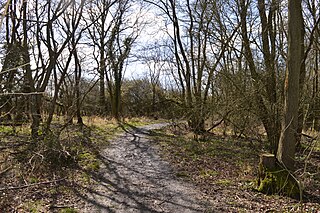
Rushbeds Wood is a 56-hectare (140-acre) nature reserve near Wotton Underwood in Buckinghamshire, managed by the Berkshire, Buckinghamshire and Oxfordshire Wildlife Trust (BBOWT). It is a surviving fragment of the ancient Bernwood Forest. The reserve is part of Rushbeds Wood and Railway Cutting, an 80.2-hectare (198-acre) biological Site of Special Scientific Interest. This includes a section of the Chiltern Main Line railway cutting, which runs along the north-east side of the BBOWT reserve.
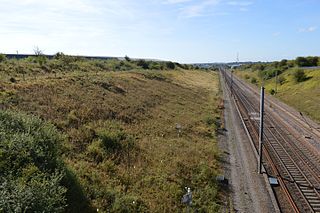
Great Stukeley Railway Cutting is a 34.7-hectare (86-acre) biological Site of Special Scientific Interest in Huntingdon in Cambridgeshire.

Portholme is a 106-hectare (260-acre) biological Site of Special Scientific Interest in the Parish of Brampton between Huntingdon and Godmanchester in Cambridgeshire, England. It is a Nature Conservation Review site, and a Special Area of Conservation.

Holland Hall (Melbourn) Railway Cutting is a 3.3-hectare (8.2-acre) biological Site of Special Scientific Interest near Melbourn in Cambridgeshire. It is the verge of a kilometre long stretch of an operational railway line, the Cambridge Line.
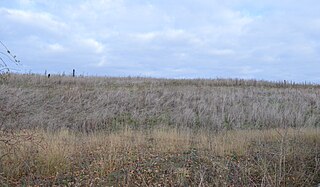
Warboys Clay Pit is a 12.6-hectare (31-acre) geological Site of Special Scientific Interest west of Warboys in Cambridgeshire. It is a Geological Conservation Review site.

Helmdon Disused Railway is a 16.6-hectare (41-acre) linear biological Site of Special Scientific Interest between Helmdon and Brackley in Northamptonshire.
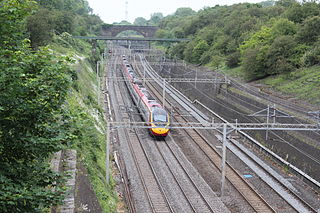
Roade Cutting is a 15.2-hectare (38-acre) geological Site of Special Scientific Interest along the West Coast Main Line north from Roade in Northamptonshire. It is a Geological Conservation Review site.
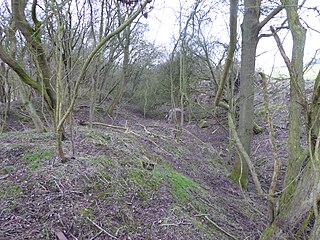
Thrapston Station Quarry is a 4.5-hectare (11-acre) geological Site of Special Scientific Interest south of Thrapston in Northamptonshire. It is a Geological Conservation Review site. It was formerly called the Thrapston Midland Railway Station Quarry.
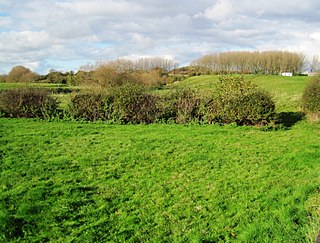
Cotes Grassland is a 3.3-hectare (8.2-acre) biological Site of Special Scientific Interest in Cotes in Leicestershire.

Shepshed Cutting is a 6.0 hectares geological Site of Special Scientific Interest west of Shepshed in Leicestershire.

Tilton Cutting is a 4.4 hectares geological Site of Special Scientific Interest west of Tilton on the Hill in Leicestershire. It is a Geological Conservation Review site, and is owned and managed by the Leicestershire and Rutland Wildlife Trust as Tilton Railway Cutting.

Ardley Cutting and Quarry is a 40.1-hectare (99-acre) biological and geological Site of Special Scientific Interest north-west of Bicester in Oxfordshire. It is a Geological Conservation Review site and an area of 11 hectares is managed by the Berkshire, Buckinghamshire and Oxfordshire Wildlife Trust as Ardley Wood Quarry. The site contains a Scheduled Monument, Ardley Wood moated ringwork, a Norman defended enclosure.

Littlemore Railway Cutting is a 0.5-hectare (1.2-acre) geological Site of Special Scientific Interest on the southern outskirts of Oxford in Oxfordshire. It is a Geological Conservation Review site.
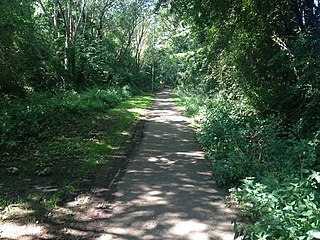
Neithrop Fields Cutting is a 1.4-hectare (3.5-acre) geological Site of Special Scientific Interest in Banbury in Oxfordshire. It is a Geological Conservation Review site.
















